
Television Review | Tales of the Jedi
Producers: Lucasfilm
Released: October 26, 2022
Episodes: 6
MPAA Rating: TV-PG
EE Critic Score: 6/10
Tales of the Jedi is a six-part anthology of animated short films, done in the style (and by many of the same people) as The Clone Wars. All six shorts were released simultaneously to Disney+. Clone Wars and Rebels head Dave Filoni serves here as the series creator and as the writer of five of the episodes, with the sixth (“Choices”, numbered third as released) written and directed by Charles Murray, a TV veteran who has worked with Disney before, as an executive producer on Season 1 of Luke Cage.
Synopsis
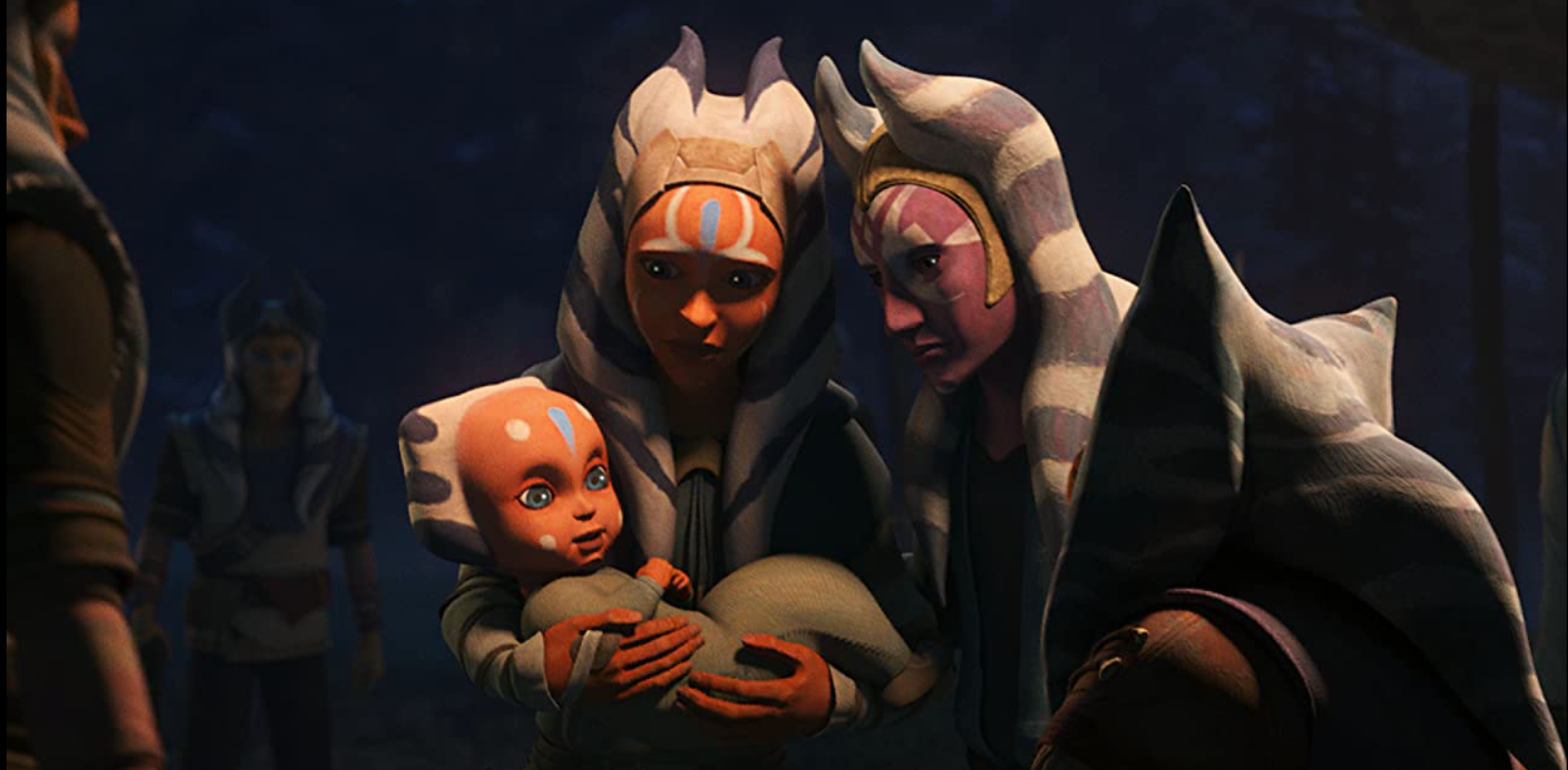
“Life and Death”
On Shili, a young Togruta, Ahsoka Tano, is born. Her mother takes her into the forest surrounding their village to hunt a deer as part of a cultural ritual, only for the infant to be stolen away by a gigantic tiger. Ahsoka’s parents are distraught, and they organize a rescue party. Before they set out, however, Ahsoka returns to the village, riding the tiger. She has been able to telepathically communicate with the cat, something that the village elder recognizes means “Ahsoka is Jedi”.
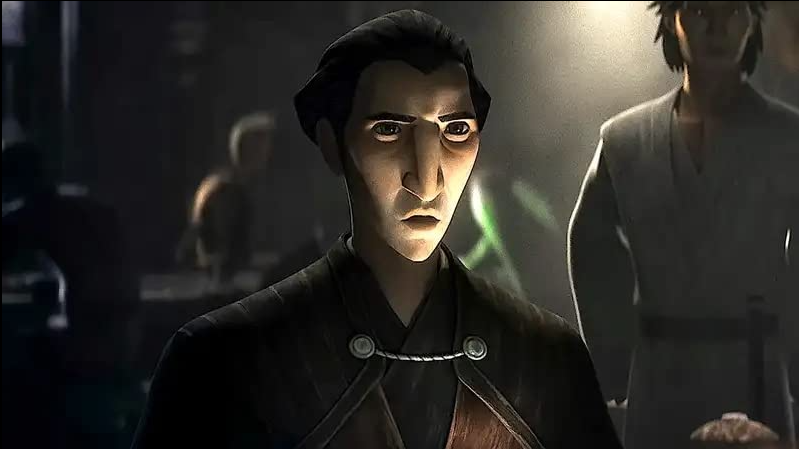
“Justice”
Jedi Master Dooku and his Padawan, Qui-Gon Jinn, are dispatched to a world whose Senator’s son has been kidnapped by a local militia. The Jedi find the world in poverty and squalor. The people there admit to kidnapping the boy, saying that the action was taken in response to the way the senator has been enriching himself at their expense. The senator himself soon arrives, demanding that the Jedi free his son by force. Dooku refuses, asserting that he is there to facilitate negotiations. The senator’s accompanying guards open fire on the militia and the Jedi alike. Dooku begins to Force-choke the senator. Horrified, Qui-Gon attempts to restrain his master but is pushed away. Qui-Gon then goes into the militia stronghold and releases the senator’s son, telling him to go outside and save his father. The son runs out to the senator, and Dooku relents. As the senator and his son leave, the son promises to remember the people’s plight. Dooku doubts that any real change will come.
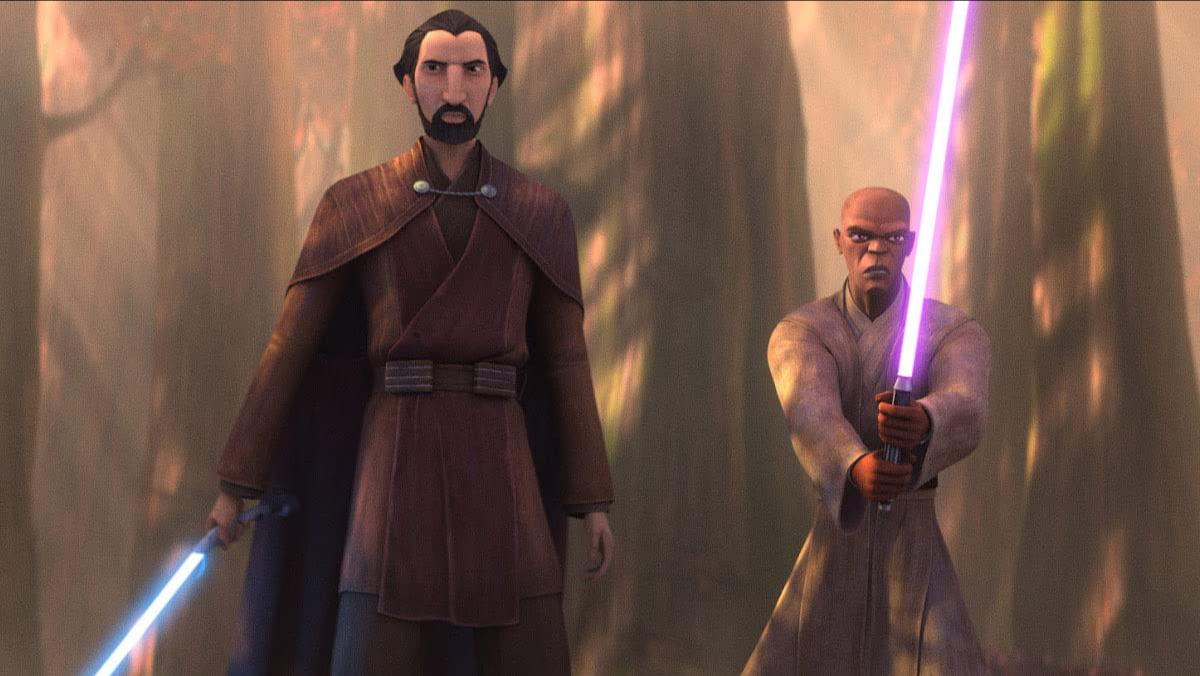
“Choices”
Jedi Masters Dooku and Mace Windu are dispatched to the Raxus system to recover the body of a Jedi Council member who had been killed on a mission there. Dooku believes that the Jedi’s death involved more than the official story would suggest and that Raxus’s Senator Larik is covering the details up. Windu is reluctant to deviate from their mission to investigate but is eventually convinced by the senior Jedi to check the murder scene. Dooku immediately notes that the blaster marks all were made from shots behind the councilor. Larik admits that his own guards had killed the Jedi before said guards kill him and attack Dooku and Windu. The two Jedi uncover a plot by the guards to blackmail Larik into reversing decisions he had made to enrich himself at the planet’s expense. After the guards are taken into custody, Dooku voices sympathy with their cause, though he condemns their methods. Back on Coruscant, a funeral is held for the fallen Jedi. In recognition of his desire to fulfill his mission as directed, Mace Windu receives the open seat on the Council.
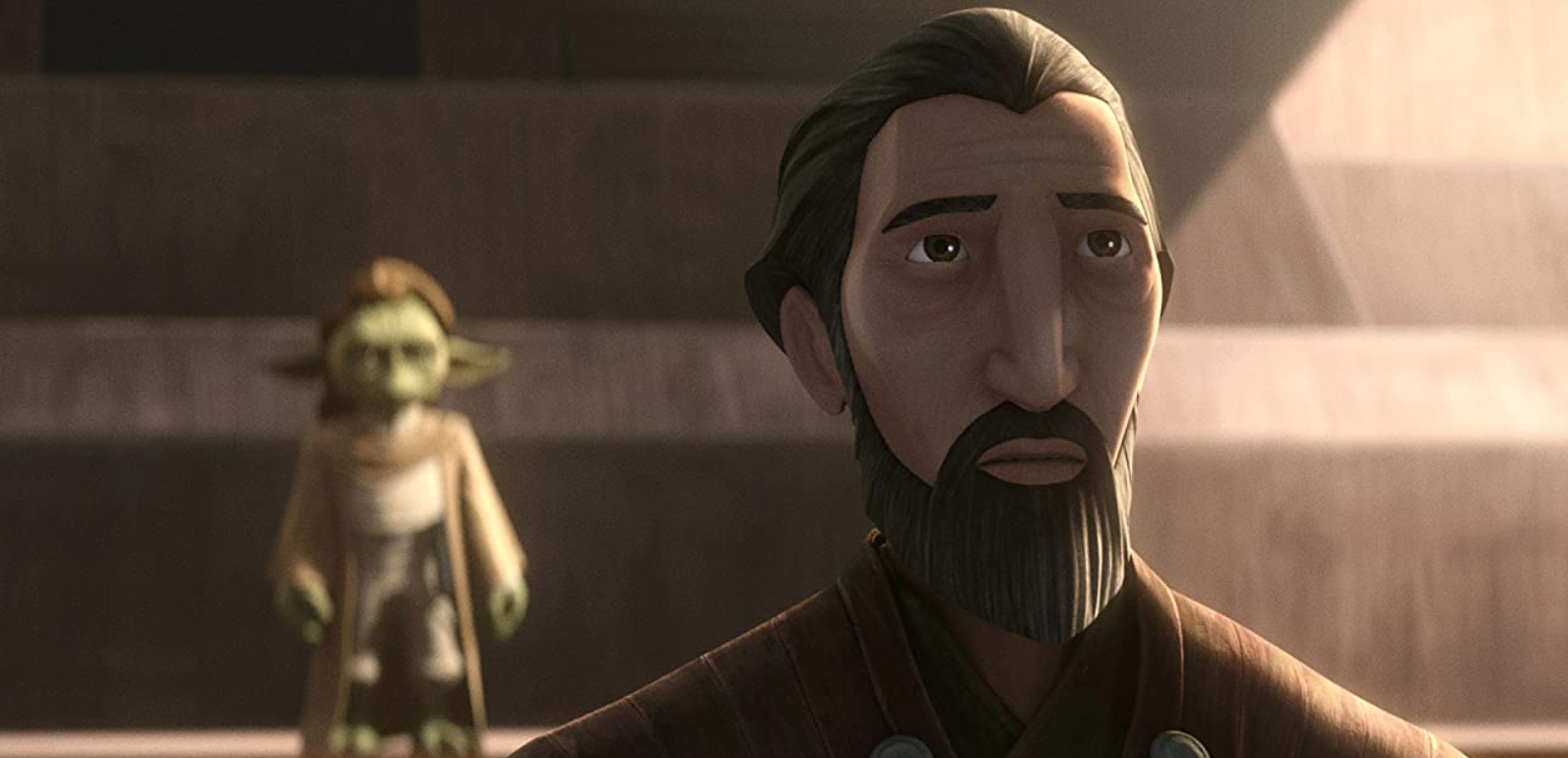
“The Sith Lord”
Count Dooku, who has, by this point, left the Jedi Order to take his place as ruler of Serenno, makes a seemingly routine return to the Jedi Temple, to check up on his old apprentice, Qui-Gon Jinn, who has just rescued the Queen of Naboo from behind a Trade Federation blockade. While there, Dooku makes a stop in the Jedi archives, erasing all information about the world of Kamino. He meets Qui-Gon, who has just delivered a statement to the Council claiming to have encountered a Sith Lord on Tatooine. Dooku warns him that “a Sith Lord is not something to be trifled with.”
The next scene takes place just after the Battle of Naboo, and Qui-Gon’s death. Once again, Dooku is at the Temple. Master Yaddle informs him that Qui-Gon’s funeral will be held on Naboo. Dooku declines to join the Council in attendance. As he leaves the Temple, Yaddle, sensing something amiss, follows him secretly. Dooku travels to an abandoned factory, meeting there with Darth Sidious. Dooku is furious that Sidious’s apprentice, Darth Maul, has killed Qui-Gon despite Sidious’s assurances that he would be spared. Sidious deflects that he, too, lost an apprentice on Naboo, and says sacrifices must be made to bring change to the Galaxy. Yaddle pops out of hiding, urging Dooku to join her in taking Sidious into custody. Sidious orders Dooku to kill Yaddle and take his place as Maul’s replacement. After some hesitation, and a prolonged lightsaber duel, Dooku kills a beaten Yaddle, becoming Darth Tyrannus.
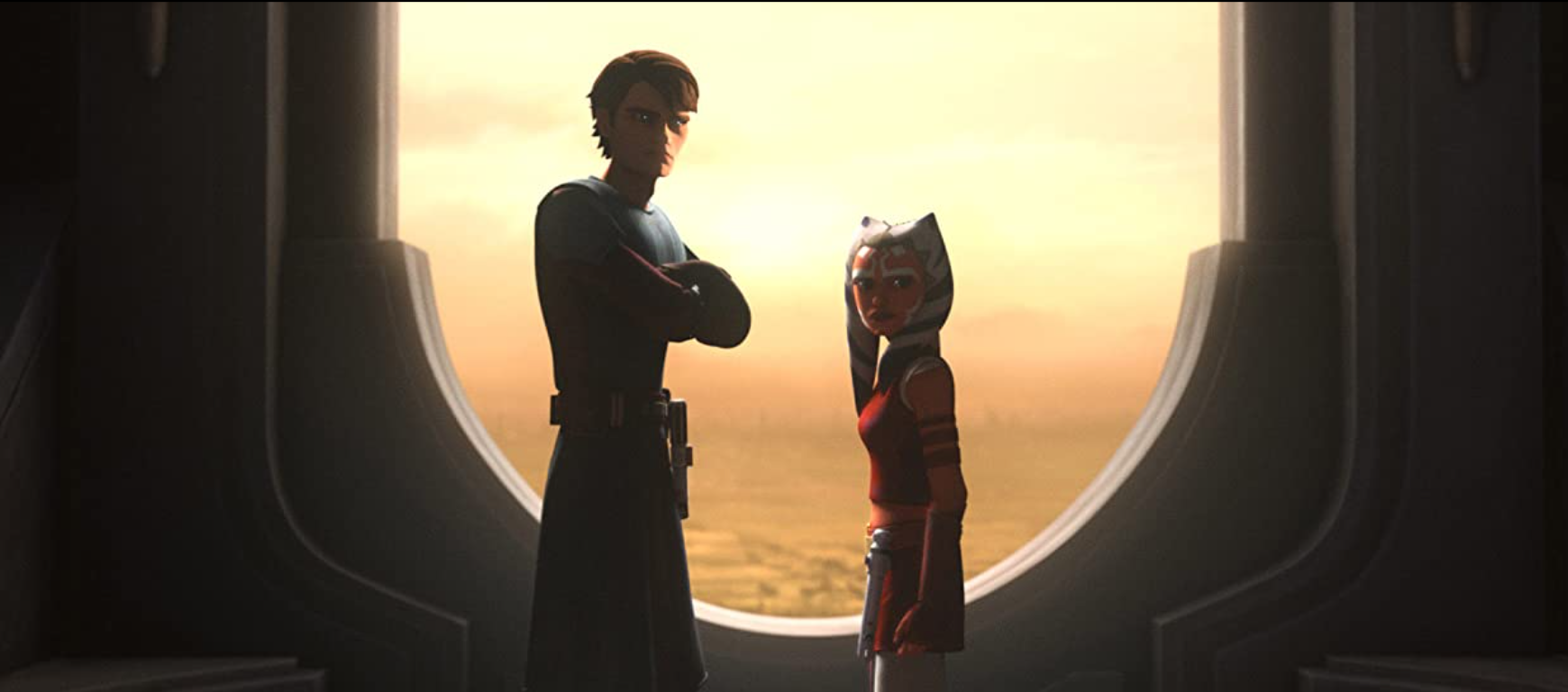
“Practice Makes Perfect”
Anakin Skywalker observes his Padawan, Ahsoka Tano, excelling in a lightsaber proficiency test meant to simulate fighting Separatist battle droids. Afterward, Ahsoka notes that Anakin seems unimpressed with her performance. Anakin responds that he’s more unimpressed with the test; battle droids are poor fighters, and most Jedi should be able to defeat them easily. He says that to be a truly great fighter, Ahsoka should train against living opponents. Throughout the Clone Wars, we are shown Ahsoka drilling with Captain Rex and other troopers of the 501st Legion, steadily improving her ability to parry barrages of blaster fire. At the end of the short, we are shown Rex and Ahsoka preparing to face those same troopers after the issuing of Order 66. Rex says he hopes all that training will pay off.
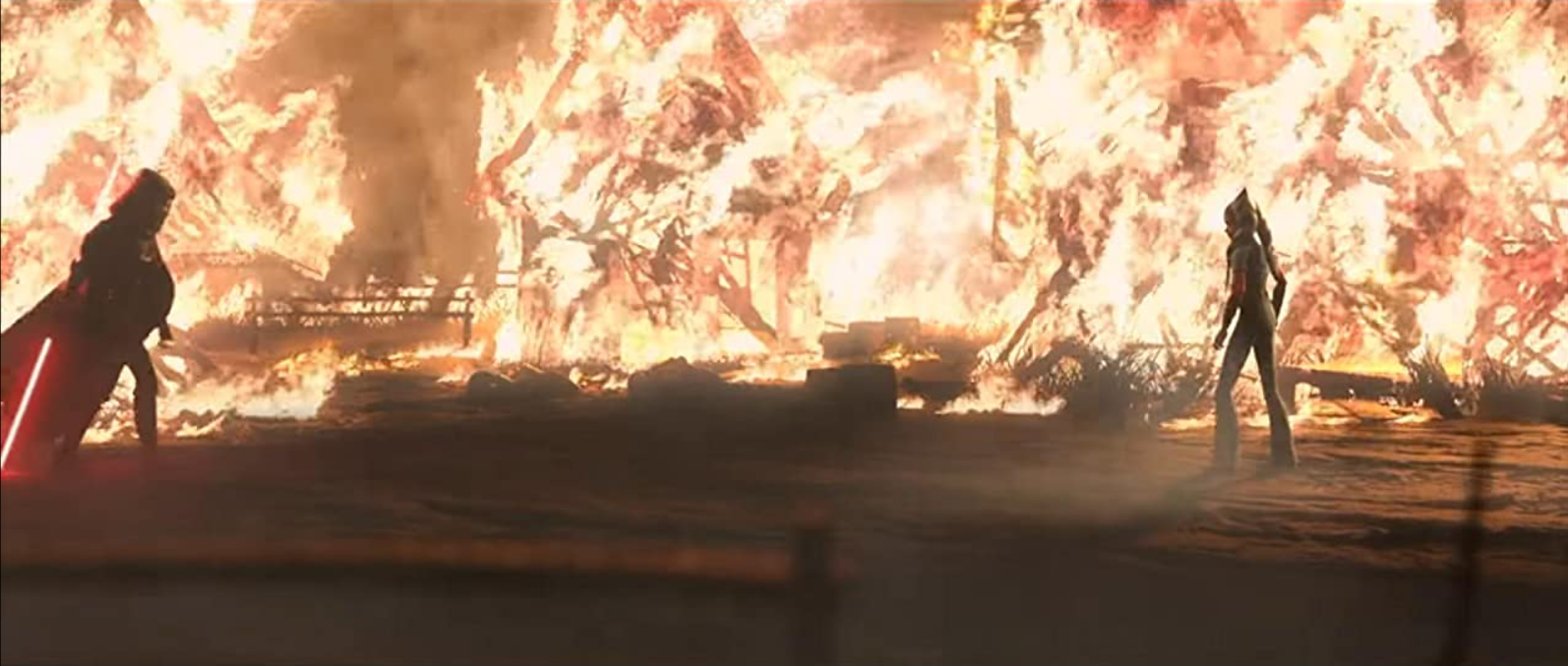
“Resolve”
Following the fall of the Republic, newly-Imperial Senator Bail Organa spots Ahsoka Tano at the funeral of Padme Amidala. He meets with her at a Theed riverbank, pledging future assistance before two shock troopers arrive to question what he’s doing in a restricted area. Ahsoka slips away unnoticed.
Some unspecified time later, we see Ahsoka working as a farm laborer on a remote world, using the alias “Ashla”. She uses the Force to prevent one of the other workers from being crushed by a hay bale. The worker is grateful, but her brother is loyal to the Empire and secretly reports Ahsoka, While Ahsoka and the sister are away on an errand, an Inquisitor arrives and razes the settlement in search of the reported Jedi. Finding nothing, he accuses the brother of lying. Ahsoka returns in time to defeat the Inquisitor and save the brother and the siblings’ …father, I presume the old man was. Ahsoka calls on Bail Organa to come and rescue what little remains of the settlement. Organa tells her that the Empire has only gotten worse, and offers her a place in a secret Rebellion, which she accepts.
Analysis
My first thought about this show is that it’s in a weird order. The episodes are split between focus on Dooku and on Ahsoka Tano. But, rather than alternating between the two characters, or grouping the three Dooku and three Ahsoka episodes together, we’re given an Ahsoka episode, then all three Dooku episodes, then the remaining Ahsoka episodes. I find no logic in this sequence. If you want to watch the Dooku episodes, it’s simple enough: just start with #2. But to watch through just the Ahsoka episodes means having to jump back to the Disney+ menu after the first one.
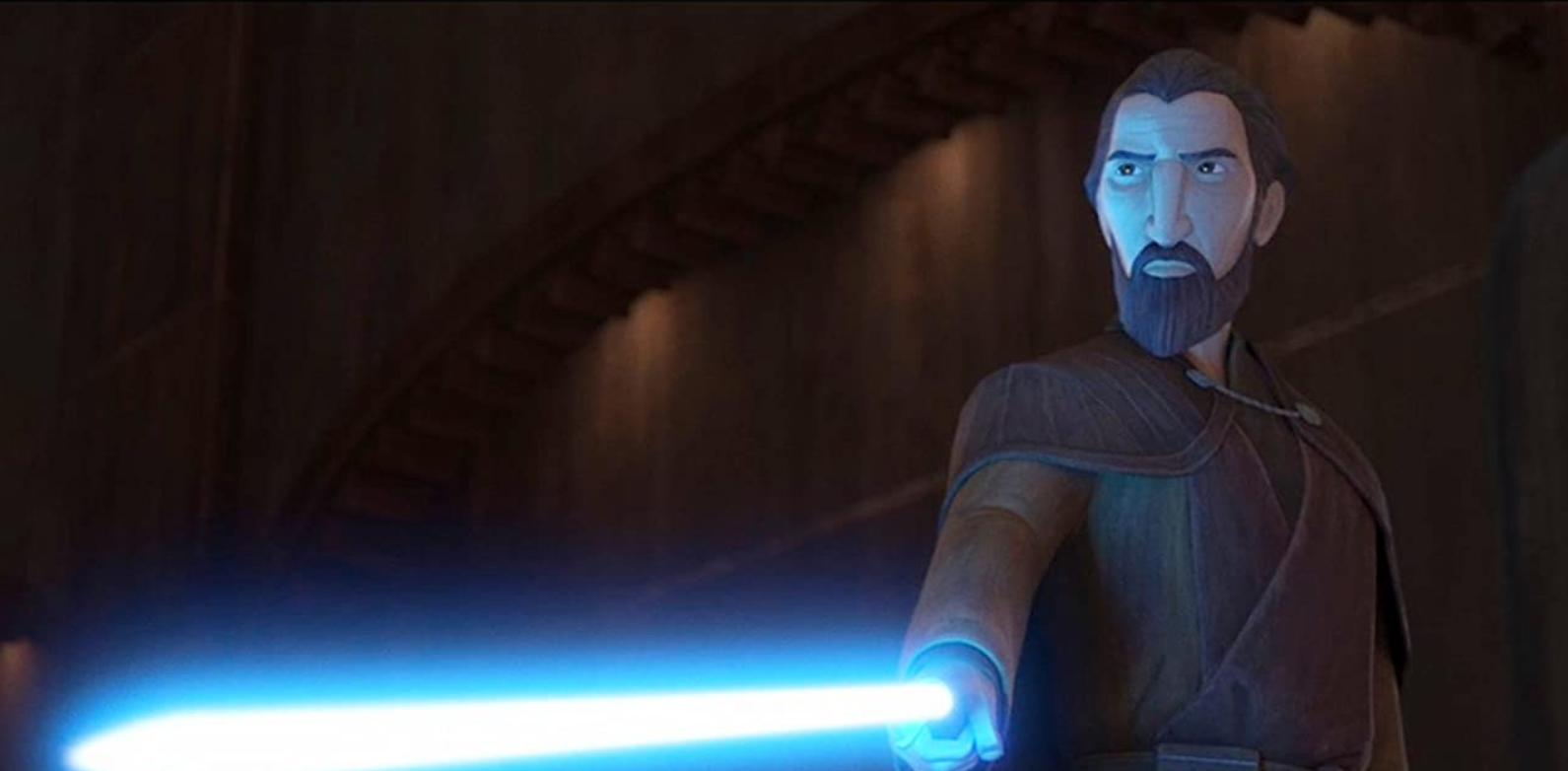
That said, I suppose it’s good that the Dooku episodes are, generally, the better ones, and the ones more worth watching all together. Dooku’s three episodes tell a more complete story, and it’s a story about a relatively unexplored character. For such a major player in an era of Star Wars that’s seen three movies and seven seasons of television, not to mention books, comics, and video games, made about it, Dooku has rarely actually been the focus of anything. There was Dooku: Jedi Lost, and, in Legends, he had some memorable moments in the comics and in the books Darth Plagueis and Yoda: Dark Rendezvous. But you could easily have given Dooku a full series.
(Speaking of, there was an interesting nod to Legends in Dooku’s first voicing support for anti-Republic fighters in the Raxus system, as it was on Raxus Prime that Legends Dooku first publically declared his Separatist movement.)
The Separatists are themselves a bit unexplored. Originally, Lucas conceived of them as a plutocracy, more of a certified corporate board than a state, made up of various interplanetary trade concerns who felt restricted by the Republic’s business regulations. But somewhere along the line, maybe in The Clone Wars, maybe somewhere earlier, that changed. Many of the business concerns we saw Dooku meeting with on Geonosis have since been portrayed as playing both sides of the conflict, and we’ve seen that a proper Separatist legislature exists. Clem and Maarva Andor have shown that there were regular people on board with Dooku’s cause. Overall the Separatist movement is no longer understood as an astroturfed sham, but as a genuine popular movement, with somewhat dubious leadership, that wasn’t simply cast aside at the end of the Clone Wars but which remained in the roots of the Rebel Alliance. The story of Dooku thus takes on a new light, and a greater importance, not just in its relation to Prequel villains, but also in relation to Original Trilogy heroes.
As we see Dooku’s disillusionment with the Republic here, my one complaint is that the storytelling is a bit flat and sparse. I’m not opposed to the idea of two stories centered on the same setup of a planet being sold out by its senator; seeing the same general occurrence twice really helps sell the idea that corruption is systemic in the Republic, where just one such story could be dismissed as an isolated incident. But when you have episodes this short, the plots have to be quite stripped down. So two similar episodes come across as nearly the same episode twice. Those first two Dooku episodes could have used a lot more space to breathe. The third works better, though it has to borrow its larger context from The Phantom Menace to get there. So yes, we get some more much-needed Dooku stories, but only just barely.
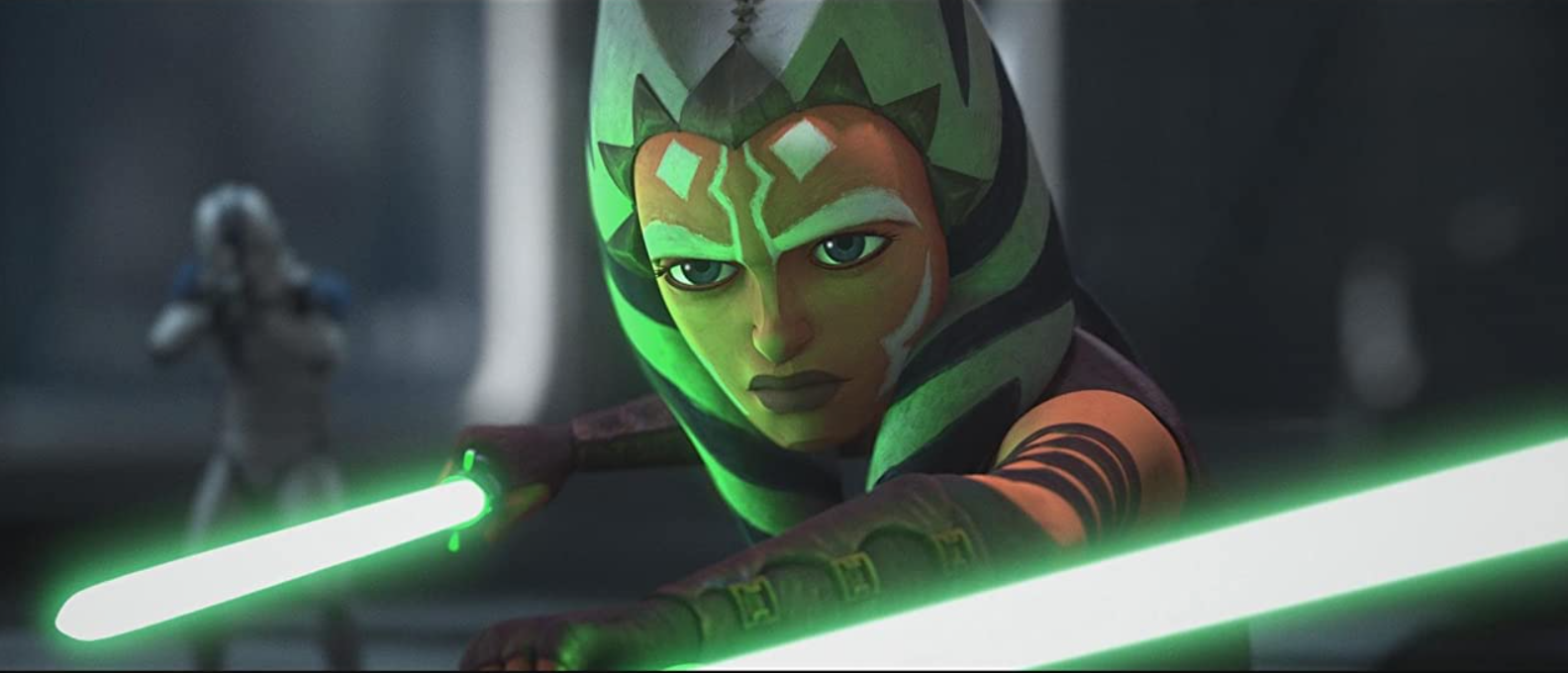
The three Ahsoka shorts were the weaker entries. Where Dooku is an underexplored character, Ahsoka is arguably overexplored. Star Wars fans have seen her play some role or another in four TV shows before this one, most especially as one of the main leads of The Clone Wars. Where Dooku was introduced as an old man who clearly had quite a history, Ahsoka was introduced quite young, and we’ve seen her throughout her life; the only backstory she could get is her infancy, which is what the first episode delivers. That first episode is actually the most interesting to me, a cute little slice-of-life showing how the Force manifests in the very young. And, yeah, we’ve seen some of that with Grogu, but he was known to the Jedi and had lived in the Temple, and probably had at least a bit of formal training. So it was kind of neat to see a Force-sensitive baby here. The second episode really only works if you’ve watched through The Clone Wars. The third is the strongest, story-wise; it, like much of The Clone Wars’ seventh season, is Dave Filoni’s take on the storyline he, after TCW was originally canceled, handed over to E. K. Johnston, who made it into her Ahsoka novel. Now, back when Season 7 came out, the differences between the siege of Mandalore as described in the book versus as depicted on-screen caused a bit of controversy. “Resolve” depicts a scene very similar to a scene in Ahsoka, but it has just enough details changed to not really be the same events. Cue another discussion about how Canon is defined and whether it’s fair for screen stuff to take priority over printed stuff.
Between the three of them, the Ahsoka episodes aren’t terrible by they feel inessential, and more than a little indulgent considering the live-action Ahsoka series coming later this year.
Tales of the Jedi serves as a sort of trial for short-form animated Star Wars, more so even than Visions did. Visions was consciously non-Canon, made to allow creators to have fun with Star Wars stuff rather than an attempt to add to the core franchise. And, after seeing these first set of episodes, I can say that they do make me want to see more volumes made about more characters, even non-Jedi. While the small-batch form works, I think that any such future volumes should be longer, episode-wise. The shortness of the episodes of this volume left stories feeling more like story treatments. They were either sketchy and incomplete-feeling, as with Dooku’s episodes, or inessential, as with Ahsoka’s.
Recommendation & Rating
Overall, this anthology was an enjoyable watch that should go over well with Clone Wars fans. I don’t know who else would get anything out of it, though. It comes off like catalog filler more than anything. Not great, not bad, and mostly just there to bulk out Disney+’s Star Wars section.
6/10 — More positive than negative. Has significant failings, but is overall an enjoyable experience.






Member Commentary